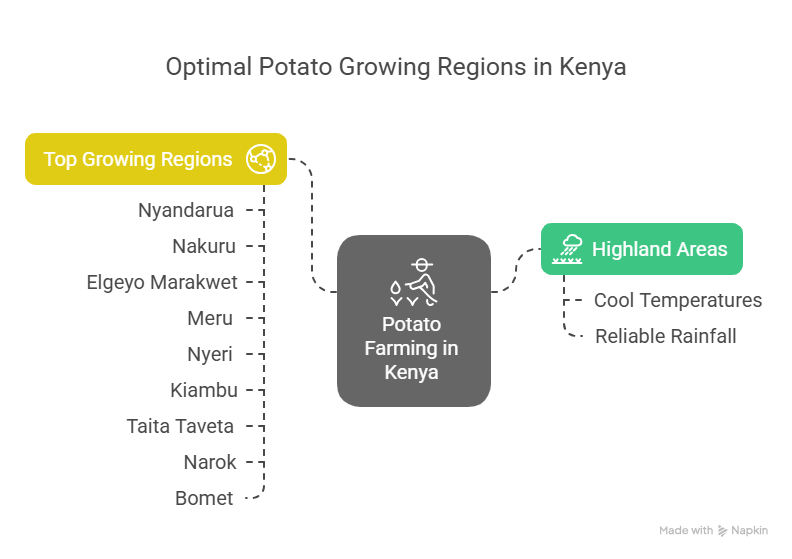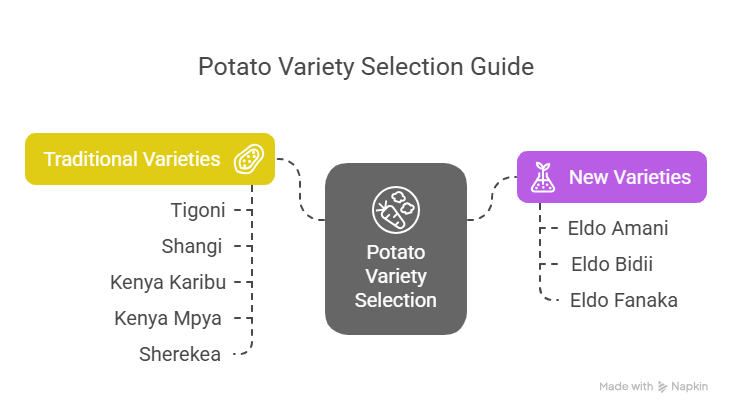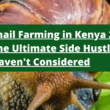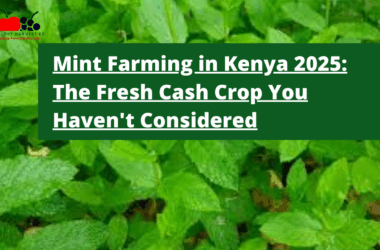You’ve probably noticed how Irish potatoes have become big business in Kenya. As our second most important staple after maize, potato farming isn’t just about putting food on tables—it’s creating livelihoods across the country.
If you’re thinking about diving into potato farming, you’re onto something good. This crop contributes around $30 million annually to our economy and employs over 3 million Kenyans. Not bad for a humble tuber, right?
Let’s break down everything you need to know to start your potato farming journey on the right foot.
Why Potato Farming Makes Sense in Kenya
Irish potatoes (Solanum tuberosum) thrive in our cool highland areas. With urbanization and the boom in fast food joints across the country, demand keeps climbing. The industry pumps out 1.5-2 million metric tonnes annually, worth about KES 50 billion.
The best part? You don’t need massive land to get started. Most Kenyan potato farmers work on plots smaller than 0.2 hectares. That’s accessibility right there.
Where Potatoes Grow Best in Kenya
Not all regions are created equal when it comes to potato farming. The crop loves our highland areas, where temperatures stay cool and rainfall is reliable.
Top growing regions include:
- Nyandarua
- Nakuru
- Elgeyo Marakwet
- Meru
- Nyeri
- Kiambu
- Taita Taveta
- Narok
- Bomet
These areas share the perfect mix of altitude, temperature, and rainfall patterns that potatoes love.

What Your Potatoes Need to Thrive
Soil Matters
Potatoes aren’t divas, but they do have preferences. They perform best in:
- Loose loamy or sandy loam soils
- Well-drained, aerated ground
- Soil rich in organic matter
- pH between 5.0 and 6.5
If your soil feels heavy or compacted, mixing HUMIPOWER® with your basal fertilizers (DAP, CAN, or TSP) can work wonders for structure.
Climate Requirements
Temperature is crucial for potato development:
- Sweet spot: 16-20°C daily average
- Below 10°C or above 30°C? Your tubers will struggle
- High temperatures during planting delay tuber formation
For rainfall, aim for regions getting 850-1400mm annually. Altitude-wise, elevations between 1,500 to 2,800 meters above sea level create ideal growing conditions.
Choosing the Right Potato Variety
The variety you plant affects everything from yield to market appeal. Traditional varieties that perform well include:
- Tigoni
- Shangi
- Kenya Karibu
- Kenya Mpya
- Sherekea
But if you’re starting fresh in 2025, check out these game-changing varieties developed by the University of Eldoret:
Eldo Amani
- Yields about 57,000kg per acre
- White skin and flesh (perfect for fries)
- Short dormancy (one month)
- Matures quickly (3-3.5 months)
Eldo Bidii
- Yields impressive 59,000kg per acre
- Resistant to bacterial wilt and late blight
- Longer dormancy (3-4 months)
- Matures in 4-4.5 months
Eldo Fanaka
- Yields about 55,000kg per acre
- Disease-resistant (great for beginners)
- Medium dormancy (2.5-3 months)
- Matures in 3.5-4 months
These new varieties combine disease resistance with high yields—exactly what you need when starting out.

The Yield Reality Check
Let’s be real about something: Kenyan potato yields currently average between 7-9 tonnes per hectare. That’s way below our potential of 20-40 tonnes per hectare.
Why the gap? Several factors are in play:
- Poor quality seed potatoes
- Low soil fertility in many areas
- Use of low-yielding varieties
- Disease and pest pressure
- Climate change impacts
The good news? Addressing these factors can dramatically boost your yields.
Tackling the Biggest Threats to Your Potato Crop
Potato Cyst Nematode
This tiny pest is a monster in disguise. Recently detected in Kenya, it:
- Has no known cure
- Can persist in soil for up to 30 years
- Devastates potato crops
Prevention is your only defense here.
Bacterial Diseases
Bacterial wilt remains one of the most persistent headaches for potato farmers. Additionally, blackleg, soft rots, and ring rot can turn a promising crop into a disaster.
Your Beginner’s Success Checklist
1. Start With Certified Seed
This is non-negotiable. Certified seed potatoes from KEPHIS:
- Are disease-free
- Have higher germination rates
- Produce better yields
Yes, they cost more upfront, but the return on investment makes them worth every shilling.
2. Master Basic Disease Management
- Rotate crops (don’t plant potatoes in the same field for at least 3 seasons)
- Practice strict farm hygiene (clean tools, boots)
- Avoid planting in fields with known disease history
- Keep those KEPHIS labels for traceability
3. Get Your Marketing Strategy Right
Contract Marketing
Form agreements with buyers before planting. This guarantees your market and often locks in better prices.
Join Forces With Other Farmers
There’s strength in numbers. Collective production and aggregation:
- Increases bargaining power
- Reduces transaction costs
- Opens doors to larger markets
Think Value Addition
Consider processing options like chips, flour, or starch. Value-added products typically fetch higher prices than raw potatoes.
The Nutritional Bonus of Growing Potatoes
Beyond the economic benefits, you’re growing a nutritional powerhouse:
- Rich in iron, calcium, phosphorous, magnesium, and zinc
- Good source of dietary fiber
- Contains choline (supports brain development)
- Provides folate (important for DNA synthesis)
- Offers vitamin B6 and C plus antioxidants
What’s New in Potato Farming (2025)
The sector is evolving rapidly. Recent developments include:
Better Seed Systems
Organizations like Agrico Potato Services Africa now ensure complete traceability of seed potatoes from import through multiplication to end users.
Price Transparency
The National Potato Council of Kenya (NPCK) collects and shares market prices across different towns, helping you make informed decisions about when and where to sell.
Stronger Value Chain Integration
Recent initiatives are connecting farmers directly with processors. In February 2025, NPCK and Viazi Kings visited processors like Simplifine Africa, Sereni Fries, and Norda Industries to strengthen contract farming arrangements.
Getting Started: Your First Potato Crop
- Select your land – Choose a plot with good drainage and no history of potato diseases
- Test your soil – Know what you’re working with (pH, organic matter content)
- Prepare your field – Clear, plow, and create ridges or mounds
- Source certified seeds – Visit your nearest KEPHIS-certified seed supplier
- Plant properly – Space correctly (30cm between plants, 75cm between rows)
- Fertilize appropriately – Follow recommendations based on your soil test
- Monitor vigilantly – Watch for pests and diseases from day one
- Harvest at the right time – When plants yellow and die back, your potatoes are ready
The Future is Bright for Potato Farmers
Despite current challenges, Kenya’s potato sector has enormous potential. With new high-yielding varieties, improving seed systems, and better market coordination, there’s never been a better time to start.
Remember, successful potato farming combines tradition with innovation. Use certified seeds, practice good disease management, and connect with other farmers and buyers.










